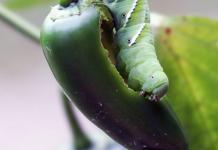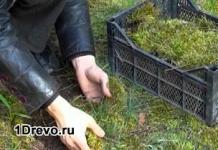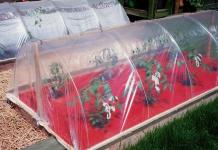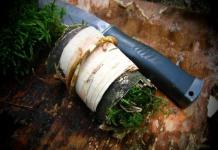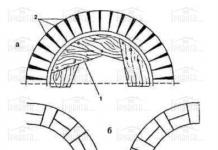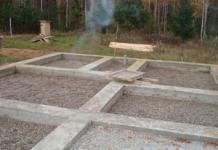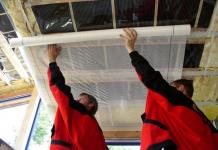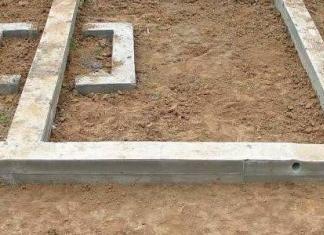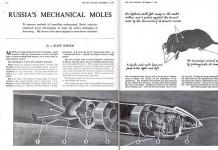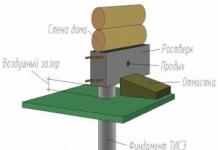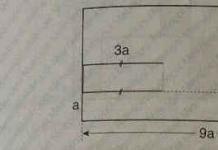Some gardeners tend to plant tomato seedlings a week or two early. It is on the timing of planting that the early harvest of vegetables depends, and it is the most desirable and valuable. But what to do if the tomatoes are caught in the cold, how to restore their vital activity?
What to do in an emergency?
According to meteorologists, the climate in the regions is changing rapidly, and therefore it can hardly be called temperate. In order to create comfortable conditions for heat-loving plants, dense film shelters are being built, and new technologies of organic farming are being introduced. Experienced gardeners are increasingly relying on varieties that perfectly tolerate heat, cold, and various diseases.
But tomatoes frozen from unexpected June frosts are the result of unjustified haste. The fatal limit is considered to be a decrease in air temperature minus six. But damage begins already at a mark of minus one or two degrees below zero. At this time, a thousand thousand tiny hairs on the stems and leaves accumulate tiny droplets of moisture on themselves, in the form of condensate. Plant immunity enters the activation stage, which is a response to frost stress. Thus, moisture, in the form of a protective shell, protects the internal tissues of the tomato from hypothermia.
If you find such signs, you must:
- Spill the ground around the bush with cool water, while the protective water condensate should not be washed off the plant.
- Without touching the leaves and stems, create a shadow from the morning sun. For this, arcs are installed, and the site is covered with agrofiber or film as carefully as possible.
- Slightly already warmed tomatoes should be sprayed with a growth-stimulating solution that will help the cuttings to renew themselves, and the roots to take nutrients from the soil for nutrition.
Some gardeners, in order to resume sap flow, gently douse the plants with cold water for several days before sunrise. After such a procedure, the stems cannot be touched, water should remain on the villi.
It is impossible to unequivocally answer the question - will the tomatoes go away if they are caught in the cold. But gardeners always strive to revive tomatoes, and they often succeed.
When planted seedlings are damaged by frost, pruning is used. The method, of course, is radical, but gives the best possible results. Seedlings are given the opportunity to survive by carrying out the following actions:
- cut off the top of the cutting with a sharp pruner to ground level
- feed with organic fertilizer (manure, urea)
- if seedlings planted in open ground are damaged, a greenhouse is built over it.
In a few days, new stepchildren will appear, here they are, with good care, they will give an excellent harvest. True, a week later than expected, but the result will still please.
Which tomatoes are more susceptible to frost?
It all depends on the degree of damage, on the efforts made, the time spent, and also where the tomatoes grow - in open ground, in a greenhouse, in a greenhouse. For example:
- Tomatoes planted in the ground under the open sky will be able to endure a simple cold snap without consequences, but they will not survive minus six. Above the bed, it is necessary to install something like arcs, which are then covered with two or three layers of film, bedspreads, not heavy blankets, and other rags. Until warm weather returns, you can not touch such sheltered ones. If the maximum frost limit is only minus two degrees, the seedlings are covered with any dishes of appropriate sizes, cardboard boxes made from newspapers with caps, the edges of which are sprinkled with earth so that frosty air does not get to the plants.

- It is easier to save tomatoes from unpleasant frosts in greenhouses. Frames can be covered with any old rag and not removed up to the mark of plus ten degrees.
- Gardeners often complain that tomatoes grown in a greenhouse suffer greatly from frost, because the temperature in it depends on the activity of the sun. Such a large room is difficult to insulate, heat, and high walls, in close contact with frosty air, can greatly cool the entire structure. In the gaps between the foundation of the greenhouse and its walls that are not sealed, frosty night air can also pass.
Drugs that give the maximum effect
For resuscitation of frozen tomatoes, it is desirable to use natural products. This is Epin-Extra (1 ampoule / 5 liters of water). It is often used first. It is an anti-stress, natural adaptogen:
- plant growth regulator
- stimulating the formation of a large number of ovaries
- preventing the ovary from falling off
- protecting it during frost
- accelerating fruit ripening and improving their quality
- reducing the effect of nitrates.
Epin-Extra
Epin-Extra is not a panacea, but an effective rehabilitation tool that supports the growth and development of culture at all its stages. Treatment should be carried out early in the morning or late in the evening, because under the influence of sunlight the main active ingredient disappears. The product should get on the stem, on the leaves from above and below. The following sprayings are carried out every ten days.
Since our water is rich in alkali, which reduces the effect of the drug, it must be diluted with citric acid, just a few crystals.
It is also used for soaking seeds for two hours before planting (4 drops of the drug per 100 g of water), as well as for spraying plants before picking seedlings (2 drops per 200 g of water).

If the tomatoes are frozen, gardeners can use Zircon. He:
- effectively activates the growth of the root system
- prevents the plant from evaporating moisture
- promotes the absorption of water, nutrients and quick survival.
Zircon
Spray applied Zircon(1 ampoule / 10 liters of water) so that the tomatoes can easily and quickly endure adaptation in a new area, two days before planting or immediately after planting. During the appearance of flower buds, re-processing is carried out.
Cytovit
Common microfertilizer will help damaged tomatoes perfectly Cytovit. This complex provides plants with micro (Mg, S, Fe, Mn, B, ZN, Cu, Mo, Co) and macro (N, P, K) elements. They increase the endurance of plants, replenish the lack of nutrients.
The above drugs can be used in a common solution - Cytovit and Epin-Extra one ampoule per five liters of water. Cytovit (three ampoules) and Zircon (one ampule) are diluted in ten liters of water.
Ferovit
To increase the photosynthesis of tomatoes, use universal stimulator Ferovit(30 drops / 1 liter of water). After spraying seedlings with this product, the green mass of not only frozen tomatoes, but also other vegetables, acquires a rich color, their roots actively grow and become powerful, a strong stem does not stretch.
Paired with growth stimulants, damaged tomatoes need top dressing. Such a unique role can be performed by Chelated microfertilizer. Its advantages - it does not combine with the soil, does not affect it, due to which it is absorbed by crops by ninety percent. And ordinary fertilizers feed plants for only thirty.
Chelates are a form of compounds in organic matter that nourishes all living things. The composition includes elements that cannot be replaced in nature. These are cobalt, manganese, molybdenum, zinc, boron, copper, iron. The chelating agent allows metal ions to enter the plant tissue in a dissolved form, which increases the efficiency of vegetable processing at times. Chelating is not a luxury, but an essential necessity for plant life.
With each new summer season, people gain experience on how to adapt to unpleasant weather disasters, how to save frozen tomatoes. If one option did not help, and the cuttings do not show signs of life, gardeners do not despair. They try all methods of restoration, especially since in some plants, including tomatoes, the function of resuscitation is inherent in nature. They are a vegetatively propagating plant, so cuttings of dead roots are sometimes applied to frozen cuttings.
After that, the stem is placed in a container of water, where it quickly grows strong roots, ready for a new planting in the ground.
Among other things, tomatoes need to be piled up, mulch, straw, chaff, and various covering materials that can be found on the site and will help protect against adverse weather changes are laid out around the bushes. Thus, paying a little more attention to your pets, there is a chance to grow healthy, strong, tasty tomatoes.
The ideal protection for a tomato from the effects of frost is planting seedlings when nighttime temperatures do not fall below ten degrees Celsius.
Kira Stoletova
Some gardeners give up if tomato seedlings are frozen. However, there are a number of useful tips on what to do if greenhouse tomatoes are frozen and how to save frozen seedlings in an open garden.

Processing with a biostimulant
If the tomatoes are frozen in the greenhouse or on the open ground, they try to spray them as quickly as possible with a special biostimulant called Epin. This domestic preparation strengthens the immune system of tomato culture, it has established itself as an effective adaptogen if it is necessary to save tomato seedlings when they are frozen at freezing temperatures.
Terms of use
Spraying seedlings with Epin is carried out mainly in the morning or at the onset of late evening. Experienced gardeners do not recommend spraying tomato bushes with this preparation during the daytime, since the active ingredient epibrassinolide, which is part of it, will quickly evaporate when exposed to daylight.
Seedlings are sprayed with Epin when the tomatoes are frozen, taking into account the processing features:
- all parts of the tomato bush are processed, including foliage, stem and branches,
- it is necessary to spray the foliage from two sides, including from the bottom,
- the frequency of processing is once every 7-10 days until the complete restoration of green tomato bushes.
When preparing a working solution with Epin, the alkaline environment of plain water, which reduces the effectiveness of its active component, is required to add a pinch of citric acid to the liquid and only then dilute the drug with it. The proportion for the working solution will be one bottle per 5 liters.
The assimilation of Epin by the plant occurs after 2-3 days, therefore, treatment with the agent is required in calm weather and in the absence of precipitation.
water irrigation
If the tomatoes are frozen in a closed greenhouse or on a glazed balcony, when the frosts have not dropped below minus temperatures of -2-3 ° C, you can revive the frozen seedlings by resorting to dousing the tomato bushes. This procedure allows you to return the moisture lost by the plant and stimulate sap flow along the stem.
During frosts with a temperature of -2-3 ° C, when the stems of a tomato plant are covered with an ice crust, there is no benefit from resuscitation procedures.
For pouring, several buckets of chilled water are prepared. Watering tomato bushes is required so that water remains on the foliage, stem and branches. Seedlings planted in open unprotected soil are watered before sunrise.
Pruning frozen haulm

If the tomato seedlings freeze heavily, the aerial top of the plant will not recover, however, the root system of such a tomato bush most often remains alive and is not damaged by frost. In this situation, when choosing a method on how to save frozen tomato seedlings, they often turn to cutting off the aerial part right up to the soil surface. With a cardinal restoration of frozen seedlings by cutting, the top is cut off with a sharp garden tool.
If a tomato bush is frozen, growing not in a greenhouse, but on unprotected soil, after cutting off the damaged parts, a small greenhouse is installed above the plant.
After trimming the top of the bush, it is imperative to carry out bait. This is done using urea, which is abundantly watered by the underground parts of the plant remaining after cutting. From above, tomato bushes are covered with a film. As a rule, fresh stepchildren can germinate after a few days and with proper further care give a good harvest, but a couple of weeks later than usual.
Secondary landing
The ability of a tomato culture to reproduce effectively by vegetative method plays a positive role in saving frozen tomato seedlings, in which part of the root system has died. The dead roots of the plant are cut off, placed in water, and when new roots appear, the seedlings are again planted in a greenhouse or open soil.
It is possible to reanimate severely damaged tomato seedlings by this method only as long as the unfrozen length of the roots allows it and provided that the initial planting of the plant was carried out by a method with intentional deepening.
Creating a shadow
When tomatoes are frozen in a greenhouse, slightly frozen tomato seedlings can be saved by hiding them from direct sunlight until the bushes move away. This is done with the aim that they thaw under natural conditions without exposure to destructive sunlight. This method of creating a shadow is used only when the greenhouse seedlings of tomatoes have frozen, but have not yet had time to freeze and turn black.
What to do if the seedlings are frozen?
Seedlings withered What to do
60 thousand seedlings froze in the agricultural cooperative of the Cherepovets region
A simple cardboard or temporary greenhouse can create a shadow for seedlings on open soil. The use of a biostimulator will be an additional incentive for the restoration of seedlings.
The thawed moisture will remain on the villi of the stem and leaves of the tomato bush, will not dry out quickly in the absence of direct sunlight and will allow the plant to regain its original appearance in a day. For tomato seedlings planted in unprotected soil, it is important to create protection against the sun already before sunrise.
The climate of most regions of Russia is changeable and unpredictable. Night frosts often return in spring. Tomato seedlings already planted in unheated greenhouses often suffer from such surprises of nature.
There is always a chance to revive frozen plants and save the crop.
Signs of frozen tomatoes
Most often, tomatoes grown in large greenhouses that are not equipped with a heating system suffer from a sharp drop in temperature. Such shelters are heated by sunlight. And frosts, as a rule, occur at night. As a result, a large surface of the walls is in close contact with the frosty air, which greatly cools the entire greenhouse. The larger the structure, the more difficult it is to heat and insulate.
Tomato bushes "beaten" by frost are easy to recognize by external signs. Slightly damaged plant parts sag limply. The color of such leaves and shoots changes to marsh-brown. With a strong defeat, the tomatoes look scalded, most of the vegetative mass turns black.
What temperature is dangerous for tomatoes
Tomatoes are a thermophilic culture and compliance with the temperature regime is important for normal growth, development and fruiting. Starting from two weeks of age, the optimal temperature for tomato seedlings are the following values:
- in the daytime - 20 -22 ° С;
- at night - 17-18 ° С.
When the temperature drops to +10 °C, the development of plants stops. At a mark of minus one or two degrees below zero, the tomatoes are partially damaged. A cold snap to minus six leads to the death of seedlings.
In frosty air, the surface of leaf plates and stems is covered with condensate. Thus, the plant tries to protect the internal cells from hypothermia. Moisture, in the form of a protective layer-shell, protects tomatoes from frostbite for a short time.
Ways to save frozen tomatoes

In order to determine whether it is possible to help tomatoes, it is necessary to assess the degree of damage to them. If the stems are intact and retain their elasticity, then the cells are not damaged, the ability to divide is not lost, and recovery is possible. You can reanimate plants by following the procedures:
- Watering
The soil around the bushes is abundantly shed with cool water. This will stimulate sap flow and compensate for the moisture that the tomatoes have spent trying to protect themselves from frost. Watering should be done so as not to wash off droplets of condensate from the surface of the leaves.
To avoid burns, plants are sheltered from the sun. You need to create a shadow from the morning sun rays carefully, without touching the stems and leaves. This can be done by installing greenhouse arcs and pulling agrofibre over them.
Important!
Tomatoes affected by frost should be watered with settled water or water from natural sources, without chlorine.
- pruning
Pruning is considered a very effective method of saving tomatoes. On the second day, you can determine which parts of the plant are to be removed. Completely dead parts have a black color and a dried appearance. To stimulate growth with a sharp knife or secateurs, cut off the affected areas to a healthy part. Often you have to cut tomatoes to the level of the soil. If the horse system has retained its viability, such a procedure will provoke the active growth of new shoots.
For a quick recovery, experts recommend additional fertilizing with nitrogenous substances. It is better if it is an easily digestible form of nitrogen, for example, a solution of ammonia (3 tablespoons of the substance per bucket of water). Experienced gardeners consider a solution of chicken manure (0.5 liters of manure per bucket of water) to be an excellent tool that gives strength to the plant.

- Use of biostimulants
A biostimulator such as Epin restores the viability of plants well. This product is safe for humans and animals. The drug improves immunity, helps tomatoes to endure stress more easily and fills them with strength. Before processing, the damaged parts of the plant are removed and the beds are watered abundantly. Spray bushes early in the morning or in the evening when the sun is not active.
To process even a large number of tomatoes, one ampoule of the substance is enough (0.5 ml per 150 square meters). "Epin" is bred in five liters of water and proceed to processing. The remaining product can be used within 48 hours.
Important information!
After all resuscitation procedures, leave the tomatoes alone until they begin to release new shoots. Of all the stepchildren that appear, select the two strongest, and delete the rest.
How to prevent the problem of freezing tomatoes. Prevention

To protect vegetable beds from frost, it is necessary to take appropriate measures in advance. Experienced summer residents resort to the following effective methods:
- installation of temporary arcs
In case of an unfavorable weather forecast, greenhouse arcs are installed in the greenhouse over plantings, which are covered with a film or spunbond. Additionally, tomatoes can be covered with old clothes, rags.
- mulching
Mulching with non-woven covering material will insulate the roots and save the tomatoes from frost. A black canvas should be laid out on the beds between the bushes.
- use of materials that accumulate heat
Roofing material well accumulates daytime heat and gradually gives it away at night. Plastic bottles filled with water have the same property. Sheets of roofing material cut to size are laid out in row-spacings and paths. Plastic containers are filled with warm water and placed near the bushes and around the perimeter of the foundation. If space allows, large barrels filled with water can be installed in the greenhouse. This method smooths out temperature fluctuations well and protects plants from frost.
- "warm" trenches
Grooves are dug between the rows and filled with hay. Such an organic filler, decomposing, releases heat and warms the plants.
Important!
When installing a greenhouse, the gaps between the walls and the ground should be covered with soil, as cold air penetrates through them.
Following simple tips, you can avoid frostbite of plants:
- Treat tomato seeds with immunomodulators before sowing. Plants grown from such seeds tolerate low temperatures much more easily.
- Start hardening tomatoes two weeks before transplanting to a permanent place. To do this, gradually reduce the air temperature in the room where the seedlings grow. 2-3 days before the expected planting date, take the seedlings to the balcony or outdoors for several hours.
- When tracking the weather forecast, compare data from multiple sources. Pay attention to the clues of nature: the cessation of precipitation, the calming of the wind and the cloudless sky are factors that indicate the approach of frost.
- If your region is characterized by return frosts, do not rush to plant seedlings in a greenhouse, because tomatoes affected by frosts come into fruition 2-3 weeks later than healthy ones.
- To be safe, plant several varieties of tomatoes that can tolerate short-term frosts. These include "Taimyr", "Bullfinch", etc.
In order for tomatoes to please with a tasty and plentiful harvest, it is necessary to provide comfortable growing conditions and protect them from recurrent frosts. If, nevertheless, vegetable plantings are frozen, it is not difficult to save them and every vegetable grower can do it.
Last year I have June 10 frozen seedlings from 98 bushes. One left.Yesterday it was, and a day later - everything is brown, dead.
As a result, stumps remained (2-3 cm near the ground). That is, the trunks COMPLETELY DRY and died.
I knew that some people get well, because I always believed in tomatoes. Unlike people who buy seedlings on the market (a little leaves withered and everything is already bad seedlings, but turn on your brains and understand that all of April (while there was snow) or most of May, these seedlings grew in a greenhouse and, accordingly, acclimatization simply did not could pass, because it grew in the ground (in a greenhouse).They do not understand simple things.After planting, the seedlings take root perfectly.
Moreover, tomato is like a weed(see for yourself: there is no growth point - firstly, it is very convenient, and secondly, someone uses it: giving the opportunity to grow an additional mass of roots. I had little experience (at the very beginning - "first pancake"), despite the return, there was an excess with seedlings. The most diverse. And they planted in a hurry quite densely. Many stretched out. But I watered them normally. As a result, can you imagine what happened after 6-7 weeks? These were real tropics, everything thickened , overgrown, when you dug seedlings 1.5-2 meters long (and longer; because the varieties were interesting to me), I thought, well, how can I plant them.
Since they grew in moisture and weaved along the ground, they had a lot of places where roots formed. It was fun to bury 1.2 m of the stem in the ground and leave 30 cm above the ground. And we generally grew stepchildren (from greenhouse tomatoes), simply sticking them into the ground, and after 2-3 weeks this is already a huge seedling. He only cannot be denied water, well, you can shade if the temperature is already under 30C.
Oh yes. Hemp.
I abandoned them. I watered it again 2-3 times, and then abandoned it. They were in the grass. Somewhere, perhaps more could have been saved.
Near 35-40% of bushes survived. grew up and gave a harvest.
I was surprised that my wife still picked several boxes of tomatoes there on different days. I thought that there would be nothing special. They have remained with me "weaving" on their own.
If the varieties are good. If you feel sorry for the work. If it’s a pity to buy new seedlings or travel far (yes, it happens, the neighbors live around, they rarely get out to the city, they don’t grow seedlings).
If you just want to see them really grow.
That must be covered(well, at least during the cold weather). I mean: you were late, the tomatoes were frozen (anything can happen) - they arrived, they covered it anyway. Then, when it gets warmer: watering, mulching is MANDATORY. And they will trample new "sprouts" from the roots - how cute.
We seem to be late with the landing. And the frosts came just in time! Which was not there for 15 years. It was a pity (when they froze), but there was a lot of work and somehow the hands did not reach the tomato.
Never been so cold.
Well, the leaves withered, well, the tops, well, what else. But in order to freeze out in a day: 100% tomato, 60% cucumbers, 50% peppers, so that the leaves of the RASPBERRY are frozen - this is some kind of finish. And according to the forecast, it was only + 2 + 4C (well, yes, this is too much, but under a covering in two layers, in principle, even cucumber seedlings survived, although not all). Clearly fantastic meteorologists, as always.
Victor
Freezing is a big problem. for many gardeners. I also had a similar, no less dramatic case.
Once on May 26, weather forecasters did not promise a strong frost. In the evening, feeling that the cold was coming, I covered the freshly planted tomatoes with a covering sheet, plastic wrap on top, and a third layer with a cloth tent. Usually this was always more than enough to protect the tomatoes. And went to sleep peacefully. What was the stress for me when I went out in the morning to see what and how, and saw minus 9 on the thermometer!
When it got warmer, and I slightly opened the beds, I was convinced that the miracle did not happen. All died 52 planted bushes of tomatoes. Just like you, Roman, they froze to the core!
It's a shame that I myself was at the dacha that night. No, in order for me to get up at two o'clock, to look ... I could have saved! He would quickly heat the water, put him under cover in buckets, or do something else ... But he would sleep like a log ... I didn’t even have nightmares! Nightmare came in the morning!)))
Well, I had a surplus of seedlings, and I restored the plantings, it was not necessary to leave damaged bushes.
A . Once, in June, in my absence, the wind tore off the protection from a separate tomato bush. As luck would have it, a frost came at night, and the bush was badly damaged. It's a shame, because it already had good ovaries. I left the unfortunate bush, then cut it off, watered it, looked after it, and covered it again in the fall.
And a grateful tomato came to life, tied a lot of fruit and pleased with a good harvest!
So in such cases, there is no need to despair, if there is no other way out, then do not rush to throw away seedlings damaged by frost! Might as well try to get out.!
The weather often presents gardeners with trouble in the form of sudden changes in temperature, especially severe consequences are felt after frost. A decrease in temperature to zero and below, affecting the surface of the soil, can partially or completely destroy tomato seedlings that have already grown stronger. Frosts can seriously affect the yield of tomato crops, but if tomatoes are frozen at an early stage of cultivation, immediately after planting in open ground, the destroyed plants can be replaced with new ones. The weather can be capricious even at the end of May, and this is actually the end of spring - many of the growing crops are preparing for a new stage of development: the formation of ovaries and the formation of inflorescences and the planting of new seedlings is too late.
Seedlings frozen in the greenhouse during spring frosts
How to protect seedlings so that they do not freeze and what protective measures will help save tomatoes from death after planting them on open ground.
Experienced vegetable growers have a lot of secrets aimed at saving garden crops from frost and for their fastest recovery in case of damage.
Secrets to help save seedlings from frost
Meteorological reports of weather conditions are a very good helper for the gardener - although there are minor discrepancies, in most cases the main points in temperature changes coincide, which gives the gardener time to prepare. Often summer gardeners unite among themselves to protect seedlings planted early in the open ground. Bonfires are built at night, with the help of which the seedlings, shrouded in warm smoke, remain intact during the temperature drop to frost.

Spring frost is dangerous for tender tomatoes
If you correctly lay out the fires around the entire perimeter, you can save large areas of land. The remains of dry manure, dried weeds are used as fuel.

Smoky fires raise the temperature near the ground
Unfortunately, this technique will not help save greenhouses - fire can damage the structure. For such a case, there are several tips in stock, one of which is the placement of thermal fans, or heaters, with which you can heat the room, creating the necessary microclimate. Some of the greenhouse owners purchase stationary band ground heaters, but such equipment is expensive and not every gardener can afford to use it.
For greenhouses, thermal heating tablets are commercially available, which, after ignition, do not produce soot.

Greenhouse smoke bomb
They are laid out indoors, set on fire, and the microclimate inside the greenhouse is monitored. The same device is used under film coatings on open ground, when polyethylene is stretched over special arcs. The method has been tested and is very popular, since the heat generated as a result of the smoldering reaction does not harm the plant and saves the seedlings from hypothermia.
How to prevent freezing of tomato seedlings in advance
Weather changes often disrupt the plans of gardeners, and if summer residents can afford to buy food in the store, then people who feed from the ground are an unaffordable luxury, and you want it or not, but you need to resist meteorological troubles and be prepared in advance for frosts. How can the loss of seedlings be prevented, and which of the methods will be useful in the future?

Protected by cartons
An ordinary metal bucket without a bottom, by screwing in the ground, makes a hole.
Everything that can serve as biological fuel is placed at the bottom of the hole: weed from the beds (the roots must be removed), straw, a small amount of manure or peat. The thermal reaction of decomposition and decay will warm the root system, but you need to follow at least initially the stem, constantly spudding the plant with earth. Use of portable shelters. You can use all the same metal arcs and film, but other devices will do: buckets, old pots.
Plastic bottles are weak, if not useless protection, especially if the seedlings have already grown in breadth and height, it is best to make protection yourself.

Shelter with agrofibre in open ground
The material used is an ordinary roofing material. People have long noticed that building roofing material retains heat for a very long time, which it accumulates throughout the day and then shares it with the plant, warming it at night. The pieces are used to make ordinary bags like caps that do not need to be thrown away, it is convenient to store them by putting them on top of each other and use them for more than one season.
Steam channels. Shallow ditches are dug in the beds between planted seedlings and material is laid on the bottom, which, rotting in the ground, releases the required amount of heat. Often peat residues or straw with humus are used as material.

Hilling tomatoes before frost
If it so happened that there is no material for shelter at hand, a very simple, but most importantly, quite reliable way to protect the plant from frost will do. With the help of a hoe, the seedlings are maximally spudded with soil and covered with ordinary grass or weeds.
Experienced gardeners often use a technique to protect tomato seedlings from frost with the help of earth and grass.
If frosts damaged tomato seedlings
If the seedlings nevertheless suffered from frosts, there is no need to despair: tomatoes are plants that regenerate well.

The tomato is frozen, but you can save it
Frozen tomatoes with proper processing and care can be saved, and if the harvest is a little worse than with normal growth, the plant will still bear fruit.
Even if the seedlings in the upper part have darkened and withered, it is not a fact that the plant has died, this happens only when the frost reaches a temperature drop of up to -3 degrees and the soil is supercooled.

Removing frozen shoots
We list the main measures to save seedlings:
- The darkened stem is cut off, the level of the incision is determined based on damage.
- Perform top dressing of the soil, you can use the method of pouring urea.
- Heavily damaged seedlings are supported with humates, diluted chicken manure, or cow dung. The same method is used for cases when frosts grabbed not only the upper part of the plant, but also damaged the rhizome of the seedlings.
- The first week, for better restoration of the root system and stem, film shelters are used.

Mini greenhouse for tomatoes
Frost-damaged tomato seedlings recover in a short time, and if the tomato yield is reduced, then the percentage of losses is not so high as to make a tragedy out of it.
Timing may also be different from normally matured plants, but the harvest period is not far behind schedules.

Autumn frost protection with covers
You should know that not only frosts can affect the quality of tomato growth, when the temperature drops below +10 degrees, the plant stops development until the weather conditions improve.



